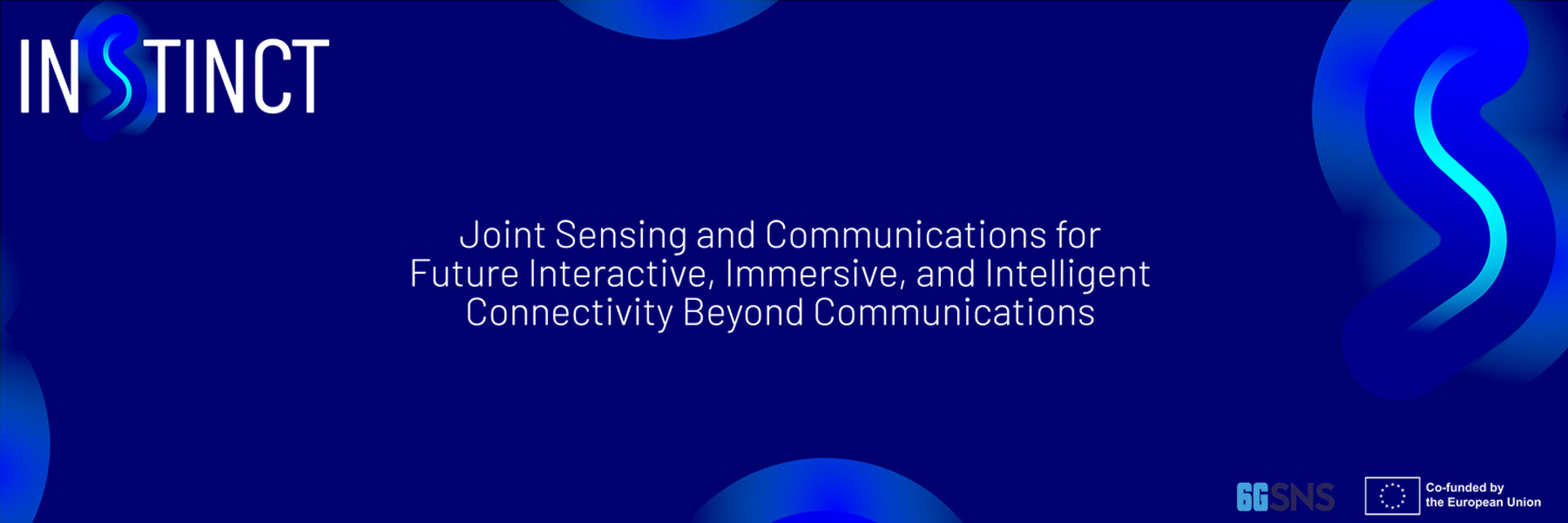
Work Package 1

Uses cases, system architecture and requirements
Work package 1 (WP3) specifies use cases and system requirements for joint communications and sensing relevant to the 3 INSTINCT pillars. Channel and sensing measurements will be performed at sub-6GHz and mmW frequencies as an input to the system modeling and to the definition of the demonstrators in WP4. Channel models for sensing-assisted wireless environments, RIS-as-a-sensor and network-as-a-sensor connectivity will be derived. Finally, WP3 will devise analysis frameworks, suitable performance metrics and the evaluation methodology for the 3 INSTINCT usage scenarios, namely I3 mobility, I3 monitoring, I3 Internet of Senses.
Results:
D1.1 INSTINCT use cases definition, requirements and system architecture
D1.2 Channel, propagation and sensing models
D1.3 Stochastic Geometry analysis of JCAS
D1.4 System architecture and performance evaluation methodology
Work Package 2

Joint communications and sensing technology enablers
Work package 2 (WP2) focuses on providing the technology enablers for the three pillars of the INSTINCT project, namely ‘sense to communicate’, ‘communicate to sense’ and ‘multi-functional JCAS intelligence’, as well as on deriving fundamental research, algorithms and performance results and benchmarks. WP2 will also contribute to understanding of baseband, RF and sensing implementation aspects, will provide practical solution guidelines, and will deliver the technology enablers for WP3.
Results:
D2.1 Initial report on joint communication and sensing enablers
D2.2 Final report on joint communications and sensing enablers
D2.3 Final report on holographic surfaces for JCAS
D2.4 Final report on the co-design of sensing and communications
Work Package 3

Machine learning empowered intelligent JCAS network
Work package 3 (WP3) aims to define a network architecture that fully enables JCAS operations. Key objectives include devising efficient resource allocation schemes, coordinating multiple sensors and reconfigurable intelligent surfaces (RISs), creating an AI-driven orchestration layer and designing a flexible management system to meet diverse service needs. WP3 outcomes will inform the development of demonstrators in WP4, including architectures, protocols and software.
Results:
D3.1 Initial report on orchestration and control of massive JCAS deployments
D3.2 Preliminary architecture for massive JCAS deployments
D3.3 Final report on orchestration and control of massive JCAS deployments
D3.4 Final architecture for massive JCAS deployments
Work Package 4

Demonstrations, Simulations, and KPI/KVI Evaluations
The objectives of WP4 are defined as follows. The work commences with defining demonstration scenarios and specifications that address the three pillars of INSTINCT. Following this, two HW proofs of concept will demonstrate the pillars and project objectives in both laboratory and real-world environments, such as parking areas and manufacturing plants. The first HW demonstrator will concentrate on applying ICAS in a sub-6GHz network infrastructure, while the second demo will showcase an ICAS system aided by Reconfigurable Intelligent Surfaces (RIS) using mmWave links (28 GHz). To expand towards more intricate scenarios and higher frequencies (up to sub-THz), a SW demonstration based on a simulation platform is planned. Subsequently, an evaluation of the relevant KPIs for different scenarios will be conducted to demonstrate the benefits of the INSTINCT project's outcomes.
Results:
D4.1 Specification of Demonstrators
D4.2 Documentation of HW demonstrators
D4.3 CORTEXLAB demonstrator
D4.4 Final KPI/KVI Evaluation Report